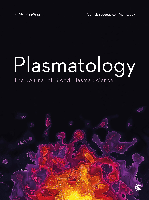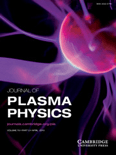
Plasma and Fusion Research
Scope & Guideline
Igniting Innovation in Plasma and Fusion Research
Introduction
Aims and Scopes
- Plasma Physics and Fusion Technology:
The journal primarily addresses fundamental and applied research in plasma physics, with a strong emphasis on applications related to fusion energy generation, including both magnetic confinement and inertial confinement approaches. - Computational Modeling and Simulation:
Significant contributions are made in the field of computational modeling, including simulations of plasma behavior, stability analyses, and the development of predictive models for fusion reactors. - Material Science in Plasma Applications:
Research on materials used in plasma environments, including studies on plasma-facing materials and the impact of plasma interactions on material properties, is a core area of focus. - Diagnostics and Measurement Techniques:
The journal highlights advancements in diagnostic tools and measurement techniques essential for understanding plasma behavior, including spectroscopy, imaging, and diagnostic systems for fusion reactors. - Innovative Technologies for Plasma Control:
Research aimed at innovative technologies for controlling plasma properties and behavior, including magnetic field configurations and heating methods, is frequently featured. - Environmental and Safety Aspects of Fusion:
The journal also addresses environmental considerations and safety protocols related to fusion energy production and plasma technologies, including waste management and radiation safety.
Trending and Emerging
- Artificial Intelligence and Machine Learning in Plasma Research:
The integration of AI and machine learning techniques in analyzing plasma behavior and optimizing fusion processes is gaining momentum, indicating a trend towards data-driven approaches in plasma physics. - Advanced Materials for Fusion Reactors:
Research into novel materials designed to withstand extreme conditions in fusion reactors, including advanced composites and nanostructured materials, is increasingly prominent as the need for improved plasma-facing components grows. - Plasma Control Techniques:
Emerging techniques for real-time control of plasma behavior, particularly in magnetic confinement systems, are becoming a focal point, reflecting the importance of stability and performance in fusion reactors. - Sustainability and Environmental Impact Studies:
There is a growing emphasis on sustainability and the environmental impact of fusion energy, including studies on tritium management and the lifecycle assessment of fusion technologies. - Integration of Experimental and Theoretical Approaches:
A trend towards integrating experimental findings with theoretical models is evident, enhancing the predictive capabilities and understanding of plasma behavior in various configurations.
Declining or Waning
- Low-Temperature Plasma Applications:
Research focusing on low-temperature plasma applications, such as in surface treatments and material processing, has decreased, possibly due to a shift towards high-temperature plasma studies relevant to fusion energy. - Basic Theoretical Studies:
There has been a noticeable reduction in purely theoretical papers that do not directly link to experimental or application-oriented research, reflecting a preference for studies with practical implications. - Non-Fusion Plasma Applications:
Topics related to non-fusion applications of plasma, such as plasma in industrial processes unrelated to energy generation, appear to be less frequently covered as the journal emphasizes fusion-related research. - Traditional Diagnostics Techniques:
There has been a decline in studies focused on traditional diagnostic techniques, with a shift towards more innovative and sophisticated diagnostic methods that provide advanced insights into plasma behavior.
Similar Journals

DOKLADY PHYSICS
Connecting Theory and Application in Mechanics.DOKLADY PHYSICS is a prominent academic journal dedicated to advancing knowledge in the fields of computational mechanics, mechanics of materials, and general physics and astronomy. Published by MAIK NAUKA/INTERPERIODICA/SPRINGER, this journal has established itself as a crucial resource for researchers and professionals keen on exploring the intricacies of physical phenomena and engineering applications. With its ISSN 1028-3358 and E-ISSN 1562-6903, DOKLADY PHYSICS has been contributing to scientific discourse since its inception in 1996 and continues to provide a platform for innovative research up to 2023. Despite its current Q3 ranking in several key categories, the journal maintains an inclusive approach, striving to influence both academic and practical aspects of its fields. While the journal may not be open access, it remains a vital publication for those interested in high-quality research, as reflected in its Scopus ranking positions across various engineering and physics categories.

PHYSICS OF PLASMAS
Transforming Ideas into Plasma TechnologiesPhysics of Plasmas is a premier peer-reviewed journal published by AIP Publishing, focusing on the vital and interdisciplinary field of plasma physics. With an ISSN of 1070-664X, this journal presents cutting-edge research that spans a wide array of topics including fusion energy, astrophysical plasmas, and industrial applications of plasma technologies. As a recognized leader in the field, it holds a prestigious Q1 ranking in Condensed Matter Physics, reflecting its high impact and quality of published work. The journal's scope encompasses both fundamental studies and innovative applications, serving as an essential resource for researchers, professionals, and students alike. Although it does not offer open access, its rigorous selection process ensures that only the most significant contributions are highlighted. With a convergence of expertise from 1994 to 2024, Physics of Plasmas continually shapes the future of plasma research and technology, making it a critical avenue for sharing discoveries and advancements in this dynamic area of physics.

Problems of Atomic Science and Technology
Fostering Global Collaboration in Atomic Studies.Problems of Atomic Science and Technology is a leading journal in the realm of nuclear physics and technology, published by the esteemed Kharkov Institute of Physics and Technology. With an ISSN of 1562-6016, this journal is dedicated to disseminating high-quality research and advancements in atomic sciences, contributing significantly to both academic and practical applications in the field. Although not an open access publication, it ensures rigorous peer review standards to maintain the integrity and relevance of cited works. The journal seeks to provide a vital platform for researchers, professionals, and students who are engaged in the exploration of atomic phenomena, nuclear engineering, and associated technologies. Published from Kharkov, Ukraine, the journal also serves as a bridge for international collaboration and innovation, making it indispensable for anyone looking to stay at the forefront of atomic science research.

Recent Contributions to Physics
Bridging disciplines with cutting-edge physics research.Recent Contributions to Physics is a distinguished journal published by AL-FARABI KAZAKH NATIONAL UNIVERSITY, focusing on the latest developments and research breakthroughs in the field of physics. Established as an open access journal since 2008, it aims to facilitate the wide dissemination of knowledge by allowing researchers, professionals, and students worldwide to access high-quality content without barrier. Featuring a diverse range of topics within physics, from theoretical innovations to practical applications, this journal is an essential resource for anyone seeking to stay at the forefront of scientific advancement. Its commitment to quality and accessibility not only enhances the impact of research in the scientific community but also promotes collaboration across disciplines. With its dedication to fostering a vibrant academic dialogue, Recent Contributions to Physics is poised as a key contributor to the future of physics research.

Plasmatology
Empowering Researchers with Open Access InsightsPlasmatology, published by SAGE Publications Ltd, is a pioneering open-access journal devoted to the field of hematology, focusing on the latest advancements and research in plasma science and its applications. Established in 2021, this journal aims to foster knowledge exchange among researchers, practitioners, and students by providing a platform for sharing innovative studies and reviews. While currently positioned in the Q4 quartile for hematology and ranking #111 in the Scopus database, Plasmatology is dedicated to enhancing its influence and reflecting the dynamic nature of hematological research. With access options freely available to all, the journal encourages a collaborative approach to address the challenges and developments in the field. Based in the United Kingdom, Plasmatology is an emerging resource for anyone interested in advancing their understanding and involvement in plasma research.

PLASMA SCIENCE & TECHNOLOGY
Illuminating the Dynamics of Plasma SciencePLASMA SCIENCE & TECHNOLOGY is a distinguished academic journal published by IOP Publishing Ltd, focusing on the realm of condensed matter physics. With its inception in 2000 and continuing through 2024, the journal serves as a vital platform for disseminating groundbreaking research and developments in plasma science, encompassing experimental and theoretical studies that advance our understanding of plasma behavior and its applications. Although the journal is not open access, its insights are invaluable for researchers, professionals, and students devoted to the intricate physics of plasmas, particularly given its respectable Q2 quartile ranking within its category as of 2023 and a notable Scopus rank that places it within the 44th percentile among its peers. Published from the United Kingdom, the journal aims to foster collaboration and innovation in this essential field of study.

JOURNAL OF PLASMA PHYSICS
Exploring the dynamics of plasma phenomena.Welcome to the JOURNAL OF PLASMA PHYSICS, a premier publication dedicated to advancing understanding and research in the field of plasma physics. Published by Cambridge University Press, this journal has been a pivotal resource since its inception in 1967, supporting scholars and professionals engaged in the innovative exploration of plasma phenomena. With an impressive Q1 rating in Condensed Matter Physics, the journal not only holds a significant position in the academic community but also ranks within the top 50th percentile in the Scopus database. Although it currently does not offer open access, the journal provides a wealth of valuable research contributions aimed at fostering knowledge and collaboration among researchers, professionals, and students alike. The Journal of Plasma Physics is committed to publishing high-quality articles that push the boundaries of knowledge, ensuring its vital role in the ever-evolving landscape of physics research.

BRAZILIAN JOURNAL OF PHYSICS
Championing High-Quality Research in PhysicsBRAZILIAN JOURNAL OF PHYSICS, published by SPRINGER, is a prominent platform dedicated to the dissemination of research within the realm of physics and astronomy. With an ISSN of 0103-9733 and E-ISSN of 1678-4448, this esteemed journal has been contributing to the field since its inception in 1996, and it continues to be pivotal in showcasing innovative studies and breakthroughs. The journal is categorized in the Q4 quartile for the year 2023, reflecting a dedicated focus on advancing knowledge across a variety of disciplines, particularly in general physics and astronomy, where it ranks 126th out of 243 in Scopus rankings. Although it currently does not operate under an open-access model, it remains an invaluable resource for researchers, professionals, and students eager to enhance their understanding of complex physical principles and developments. The journal is committed to promoting high-quality research, bridging gaps in knowledge, and fostering collaboration within the global physics community.

ACTA PHYSICA SINICA
Advancing the Frontiers of Physics and AstronomyACTA PHYSICA SINICA is a prominent journal published by the Chinese Physical Society, dedicated to the dissemination of groundbreaking research in the field of physics and astronomy. Established in 1993, this journal has consistently contributed to the scientific community by publishing high-quality articles that cover a wide range of topics within general physics and related disciplines. Although currently classified in Q4 of the physics and astronomy category by Scopus, ACTA PHYSICA SINICA plays an important role in fostering collaboration and communication among researchers in China and around the world. With a substantial readership, this journal is poised to remain a valuable resource for professionals, researchers, and students alike. By providing in-depth analysis and insights, it aims to advance the understanding and application of physical principles in various technological and scientific advancements. The journal is accessible via subscription, ensuring that contributors and readers can engage with the evolving landscape of physics research. For more information, visit the publisher's website.

PRAMANA-JOURNAL OF PHYSICS
Championing Quality Research in Physics and AstronomyPRAMANA-JOURNAL OF PHYSICS, published by the esteemed Indian Academy of Sciences, serves as a pivotal platform for disseminating high-quality research in the field of Physics and Astronomy. Established in 1973, this journal aims to promote significant findings in various branches of physics, encapsulating both theoretical and experimental research. With a solid reputation reflected in its Q2 ranking in the Physics and Astronomy (miscellaneous) category and a commendable 94/243 rank in the Scopus database, PRAMANA stands at the forefront of the academic community. Researchers, professionals, and students benefit from its accessible compilation of innovative studies, contributing richly to the scholarly discourse. The journal, operating from its base in Bangalore, India, is committed to advancing knowledge through rigorous peer-reviewed articles, ensuring that all contributions hold merit in expanding our understanding of the physical world.